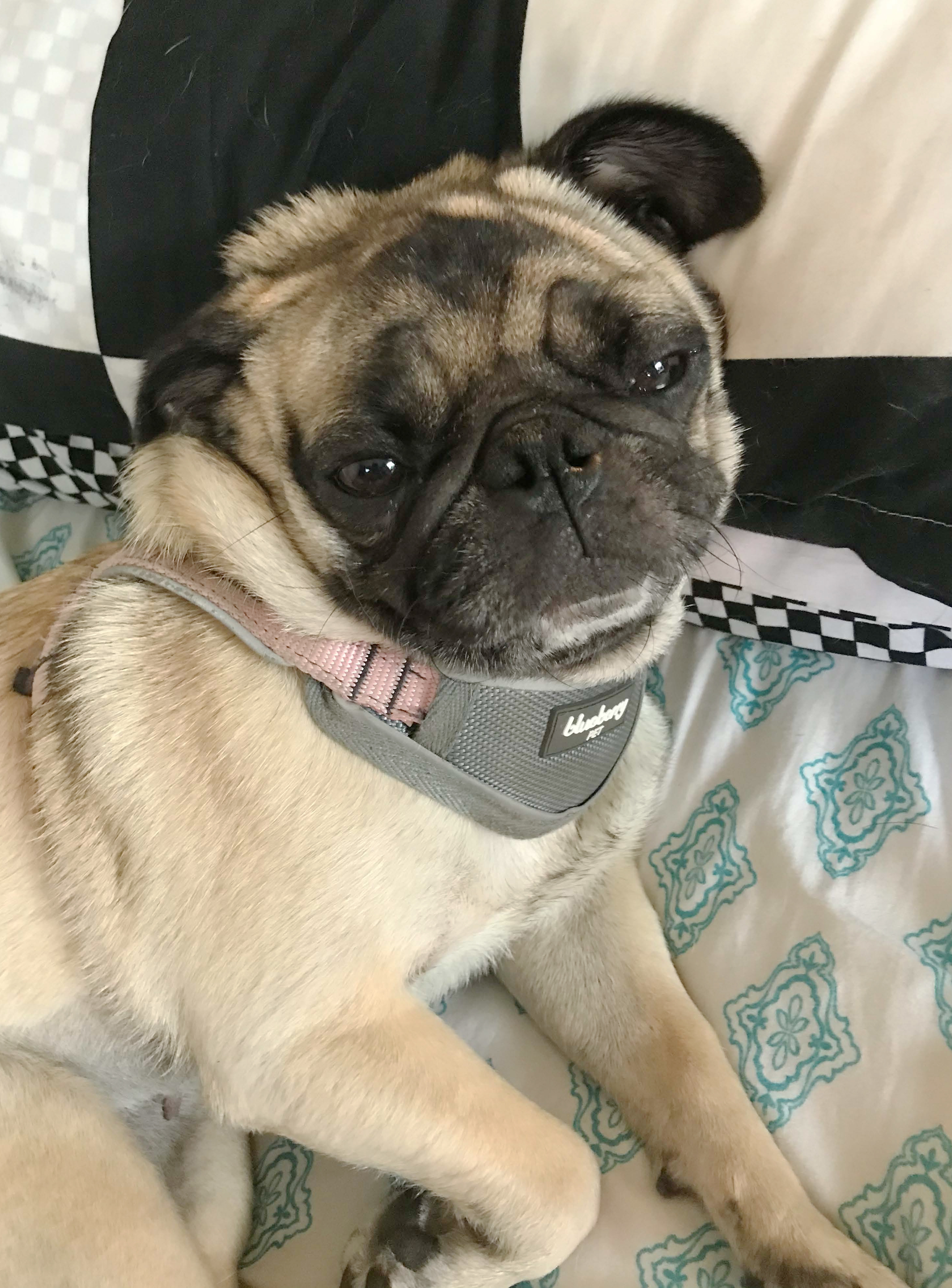This is a question I have been asking myself for a few weeks now, so I decided to do some research on it. Penelope (my two-year old pug) came from a breeder where she lived in a kennel with another pug. When I purchased her, I was with her constantly for a few months. Then we moved. She nows stays home by herself for several hours a couple days a week. She starts getting worried when she realizes I’m leaving but seems alright when I do leave. But, when I come home, she scolds me good and it takes her up to hour to calm down. Her breathing is rapid and noisy. She doesn’t tear anything up or potty on the floor. It’s just her breathing that I worry about.
The vet gave me some anxiety medication, which does help- I’m just not a huge fan of medicating dogs constantly.

Here are some tips I found for handling separation anxiety. I’m going to try some of these and write another blog post about the success of them at a later time.
What are some of the signs of separation anxiety?
–your dog destroys items when you are gone
–he follows you from room to room when you are home
–he acts extremely hyper when you return home
–he digs or scratches at windows or doors in our house
–he howls, barks or whines when you are gone
–he potties in the house
–panting
–excessive licking or chewing
What cause separation anxiety?
No one seems to know exactly when causes separation anxiety, but they do know that dog’s exhibit these actions because they panic. According to the Humane Society, your dog isn’t punishing you for leaving- he simply just wants you to come home.
What situations might cause separation anxiety?
–A dog that is left home alone for the first time
–Being left home alone after being accustomed to constant human companionship
–Any type of a traumatic event for the dog (being left somewhere different, like a kennel or a dog shelter while you are away)
–Some type of traumatic change in the dog’s family (maybe the loss of the dog’s owner)
–A change in the dog’s schedule
How do I treat my dog’s separation anxiety?
–Don’t treat leaving and coming home like a big deal. Just stay calm, greet your dog and ignore that they are stressed. Pet them calmly as if nothing happened.
–Leave some of your worn clothes in an area where the dog sits or lays. He will smell your scent on the clothes and that will comfort him.
–Tell your dog the same thing every time you leave the house (could be “I’ll be back,” or “Stay,” etc… Just be consistent. After a time, he will realize you are coming home soon.
–Until your dog gets used to staying home by himself, consider using a calming medication from your vet or an over-the-counter calming treat.
–Try a calming treat for dogs, like Zesty Paws’ Calming Bites. These treats contain hemp, chamomile, and L-theanine.
–Try a calming t-shirt or coat.

What NOT to do when your dog has separation anxiety?
–Don’t punish your dog for stressing out when you are gone. It won’t help and he won’t understand why you are punishing him.
–Don’t crate your dog to try to cure separation anxiety. Your dog may end up harming himself trying to get out of the kennel, so it’s better to just find them a safe area in your house to stay while you are gone.
–Don’t leave the radio or the television on… unless your dog is used to it being on.
–Don’t take him to obedience training to try to cure separation anxiety. It isn’t the result of disobedience of lack of training.
–Don’t get another dog just to try to cure separation anxiety. Your dog has anxiety as a result of being away from you. Getting another dog may or may not help that situation. Hopefully, having a companion will keep the dog with separation anxiety entertained and provide comfort but there’s no guarantee of that.
It is very important to physically and mentally stimulate your dog to help with separation anxiety. Here are some suggestions for doing that:
1.Try to exercise your dog at least 30 minutes every day. If possible, take him for a good walk before you leave him. A walk might encourage him to relax and rest while you are away.
2. Give your dog some fun, interactive games to play with while you are gone. Also, play those games with him when you are home.
3. When walking your dog, take different routes so he can smell and experience new sights and smells everyday. This will stimulate him.
4. If your dogs has some friends, let him play with them often. If there is an area they can play without being on a leash, even better.
5. Provide food puzzle toys for your dog. These toys seems to encourage licking and chewing, which seems to have a calming effect on your dog. Put cheese, yogurt or peanut butter in your dog’s puzzle toys.
https://www.humanesociety.org/resources/does-your-dog-freak-out-when-you-leave
Until next time,
Hugs and Pug Kisses,
Candy
